Lima was little more than an afterthought when I first traveled to Peru. Like many travelers, I saw Lima as the hub from which I would catch a flight or bus to the country’s more famous sites and cities.
But when a sprained ankle only a couple of weeks into my trip forced me to spend time there, I quickly fell in love with the vibrant and bustling city and my fondness for it grows every time I visit.
Home to a third of Peru’s population, Lima is a melting pot where you sample a bit of everything the country has to offer, and then some. Here you can explore ancient ruins surrounded by colonial mansions, indulge in world-class gastronomy with breathtaking views of the Pacific sunset, spend hours wandering galleries and museums, or shop like a local at some of the largest markets in the country.
History buffs, arts and culture enthusiasts, foodies—there’s something for every type of traveler in Lima. Read this chronicle of the city’s history from founding until present day to learn about the sites and activities Curios ranks among the best.
City of Kings
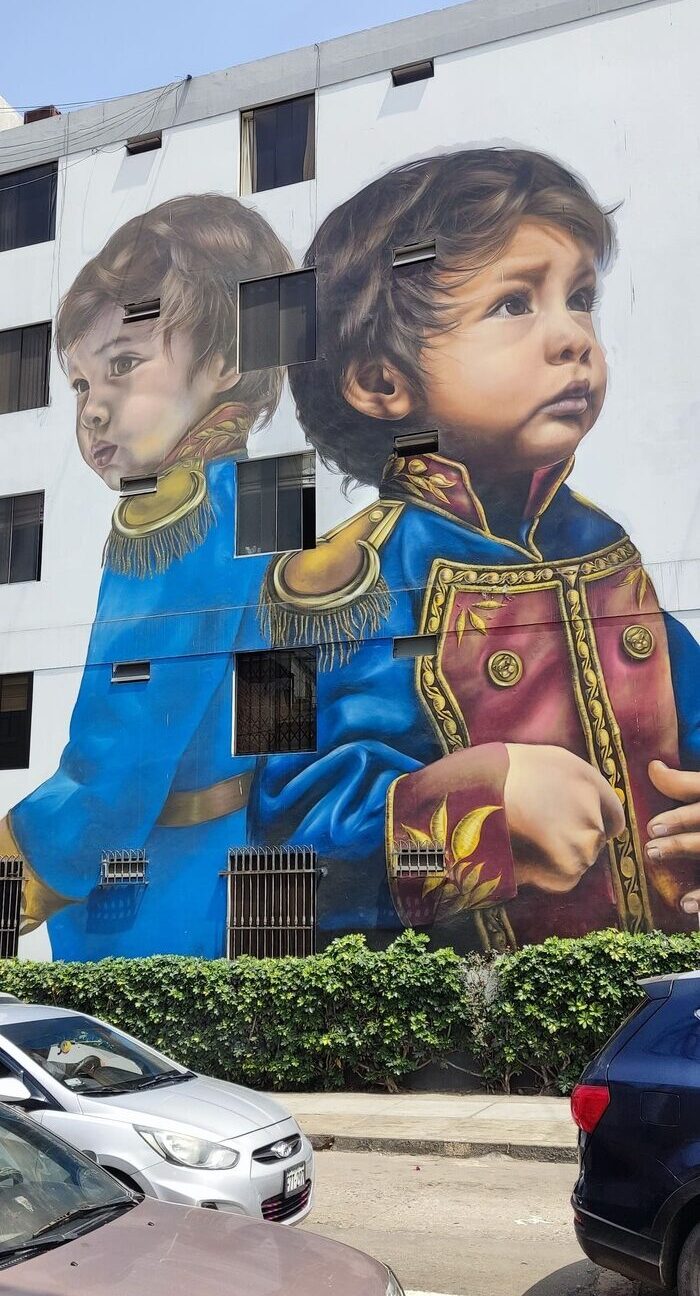
What we now know as Lima was founded by Francisco Pizzaro in 1535, who named it the City of Kings, in a nod to the Wise Men of Matthew’s Gospel. After defeating the Inca rebellion led by Manco Inca in 1536, the Spanish crown confirmed the founding and, by 1542, the coastal desert city replaced Cuzco as the capital of the viceroyalty (or province) of Peru.
From the capital, royal justice was administered, and wealth concentrated. The City of Kings was also the headquarters of the Inquisition for the viceroyalty and thus the center of Spain’s religious and moral campaign.
Some of the most exquisite examples of the administrative buildings, churches, and convents constructed for these purposes still stand in the historic center of Lima. The Plaza Mayor Lima, Monastery of San Francisco, and Cathedral of Lima are three such examples and part of a designated UNESCO World Heritage site that shouldn’t be missed.
The Plaza Mayor Lima, or the Plaza de Armas, built in 1535, served as the cultural heart of the colonial city, where religious celebrations, markets, and bull fights took place. The Cathedral of Lima sits on the southeast end of the plaza and within its walls, visitors will find the iconic gold-plated altar, Pizzaro’s tomb, and the Religious Art Museum filled with paintings and sculptures, sacred vessels, and antique religious garments. Only a few, walkable blocks away is the Monastery of San Francisco, where the catacombs and convent library, with some 25,000 antique texts, are the main attractions.
Stagnation and Miracles
Thanks to its position at the center of trade networks between the New World, Europe, and the Far East, Lima thrived for some time. But by the end of the 17th century the economy was stagnating because of reduced silver production, downturns in trade, and competition from other cities in the Americas. Reconstruction after earthquakes in 1655 and 1687 emptied the pockets of the viceroyalty.
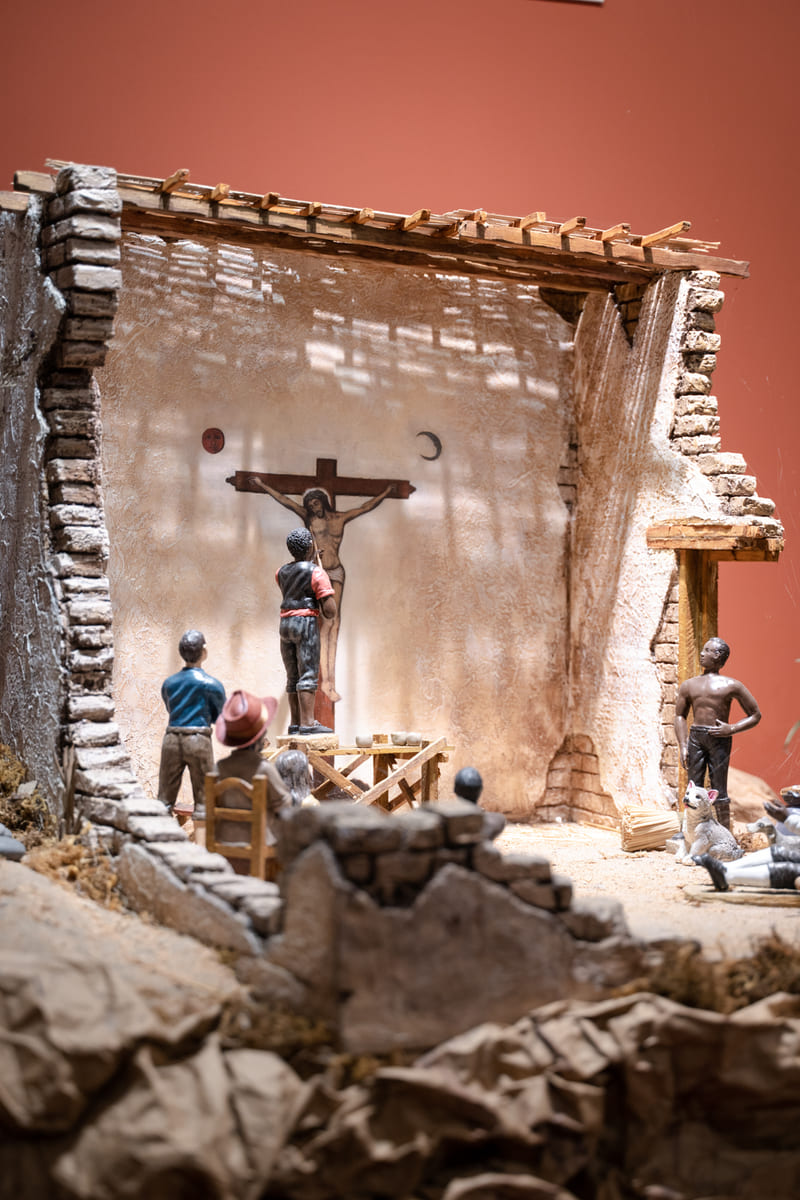
Thanks to its position at the center of trade networks between the New World, Europe, and the Far East, Lima thrived for some time. But by the end of the 17th century the economy was stagnating because of reduced silver production, downturns in trade, and competition from other cities in the Americas. Reconstruction after earthquakes in 1655 and 1687 emptied the pockets of the viceroyalty.
One of the few things to survive the devastation of the earthquake was an image of Jesus painted by an African slave in 1651. That same painting had already survived the earthquakes in 1655 and 1687, which led to its veneration by Afro-Peruvian locals who called it the Lord of Miracles. It was its survival through the third earthquake that commanded the intense devotion of all of the city’s Catholics, a devotion that persists to this day.
Since October 1746, the Lord of the Miracles has been taken out for procession every year, making it one of the oldest Catholic traditions in Peru and one of the largest religious processions in the world. The rest of the year, the image remains in the Monasterio de las Nazarenas, where visitors can see the famous painting and learn about its veneration and miracles.
Lima Booms Again
Between 1810 and 1821, the Spanish colonies fought for independence from Spain. Peru officially declared independence on July 28, 1821 and Lima became the capital of the new Republic.
What followed was decades of political unrest as different sectors of Peruvian society clashed. Despite some years of growth after the completion of the Lima-Callao railroad in 1851, Peru’s development was all but halted.
It wasn’t until the 1920s that Lima began to grow into the city that we see today. The introduction of the automobile triggered a road-building program that connected the Lima district with other parts of the country. Migrants from all over Peru began to flock here by the thousands, looking for opportunities in the country’s center of wealth and modernization.

What to do in Lima District
Our Top 4 Recommendations
All of the colonial buildings designated as part of the UNESCO World Heritage site in the historic center of Lima are worth visiting but, as we mentioned earlier, the full history of this city dates back thousands of years. You can learn more about that history in the heart of Miraflores, where you’ll find the pre-Inca pyramid known as Huaca Pucllana.
Dating to 400 BCE, the adobe and clay pyramid is nearly 1,000 years older than Machu Picchu. It’s believed to have been built by the ancient Lima culture and it served as an administrative and ceremonial center as well as a temple dedicated to the God Pachacamac.
1. Indulge in Peruvian Food
Peru might just have the best cuisine in South America and Lima is where you can try all of it. Criollo cooking is a blend of Spanish, Andean, Chinese, and African influences and it’s just as good in a small, family-run restaurant as it is prepared in chic restaurants or the homes of famous Peruvian chefs.
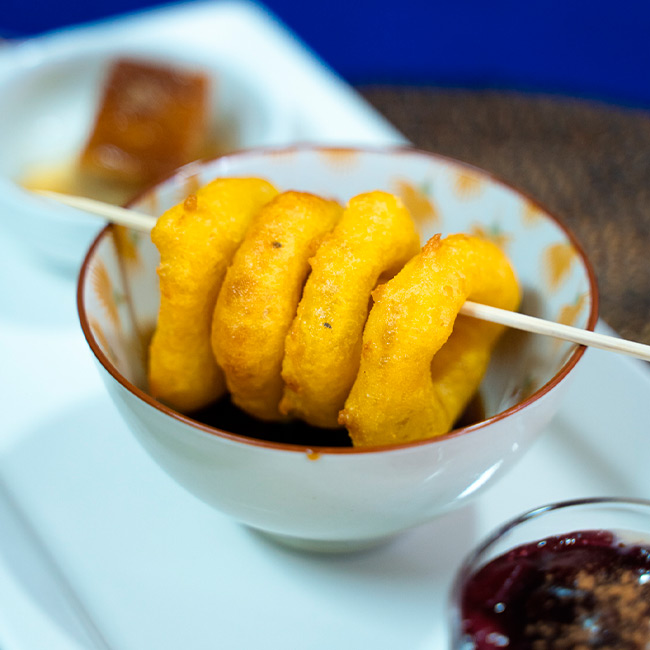
Peru also has a market culture, where local producers and vendors sell food, clothing, and wares from small stalls. Lima has many notable Peruvian markets, and this is where you can sample the exotic fruits grown around the country (including my favorites: chirirmoya, grandilla, and aguaymanto), as well as the best and freshest ceviche. (Just look for the stall with the most locals.)
For the foodie traveler, we’d be remiss if we didn’t mention Lima’s reputation for being the gastronomic center of South America. World-class restaurants are abundant here, so set aside a budget to indulge in the haute culinary scene of the city.
2. Walk the Nicest Neighborhoods
In upscale Miraflores, you’ll find some of the best Lima shopping, restaurants, bars, and nightclubs, but my preferred pastime here is sitting in Kennedy Park. This is where locals come to chat, snack, read, or meet friends and family. There’s always some musician or live entertainment in the small amphitheater, artisans selling handmade products, and food carts filled with choice Peruvian street food.
Barranco is Lima’s bohemian paradise. It’s filled with boutique shops, art galleries, and streets painted with spectacular street art, and it’s also the gateway to an unmissable oceanside walk. The trail runs alongside the Circuito de Playas de la Costa Verde and takes you through the city’s best beaches. You can rent a bike, jog, or stroll along while watching waves crash on shore with the backdrop of breathtaking sunsets.
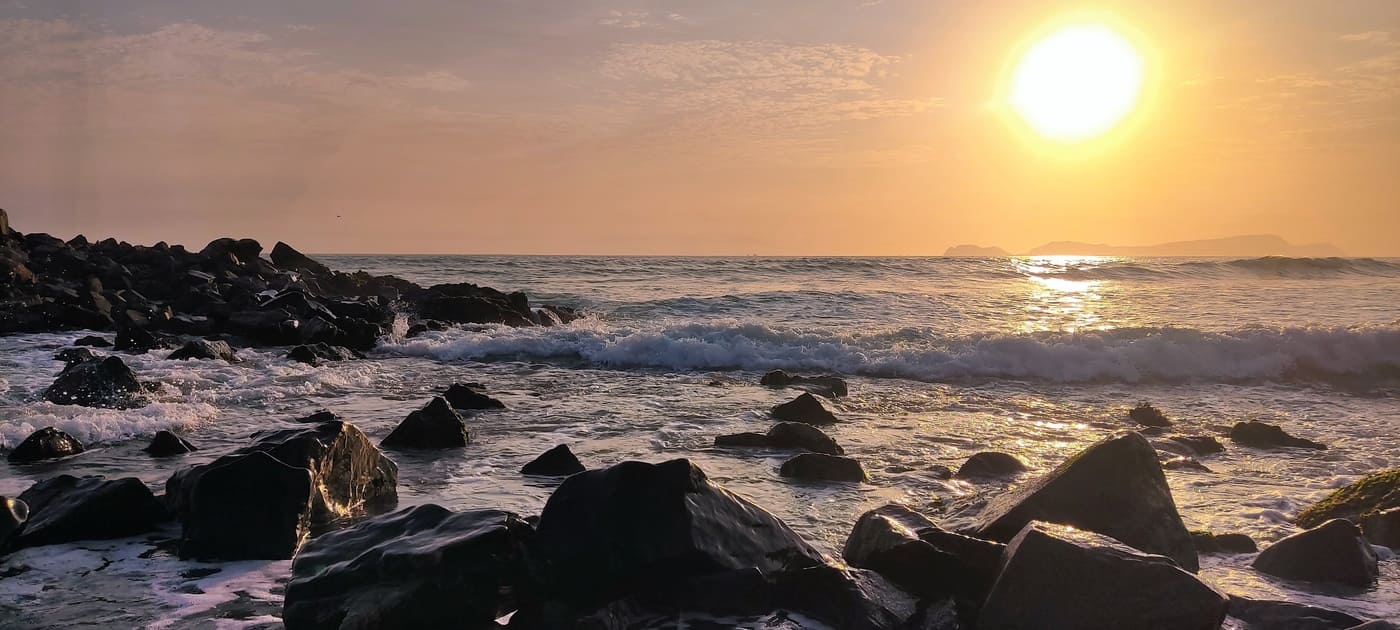

3. Visit Museums
Archeology, popular art, technology, military, history, culture, earth science… whatever you’re into, Lima has a museum for it. The Larco Museum and the MALI are absolute must-sees.
The Larco Museum houses the largest and most important archeological collection of Peruvian pre-Columbian artifacts in the world. The museum is located in an 18th century vice-royal building and its galleries cover 5,000 years of ancient Peru, including a celebrated exotic collection.
MALI is the Lima Museum of Art located in downtown Lima. The permanent exhibit includes more than 18,000 pieces spanning 3,000 years of Peruvian history. Its galleries are divided into 4 historic periods: pre-Columbian, Colonial, Republic, and Modern, and the works include ceramics, textiles, photography, paintings, and metal work.
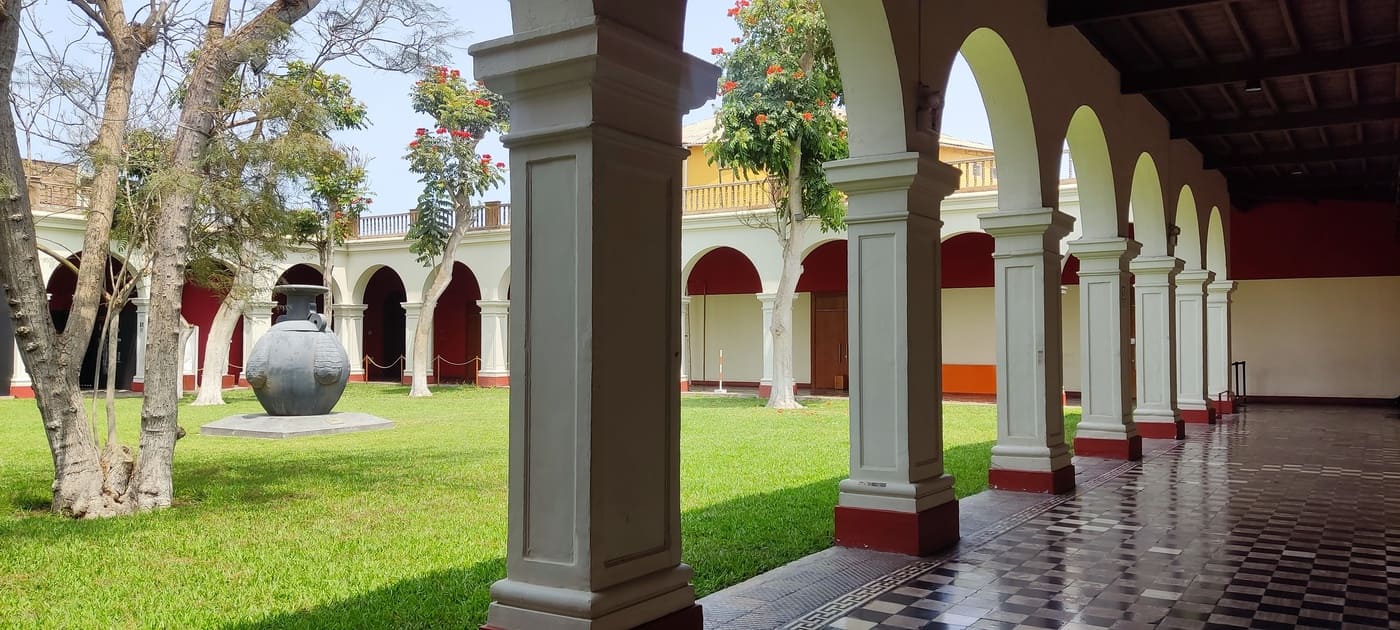
4. Explore Ancient Historic Places
All of the colonial buildings designated as part of the UNESCO World Heritage site in the historic center of Lima are worth visiting but, as we mentioned earlier, the full history of this city dates back thousands of years. You can learn more about that history in the heart of Miraflores, where you’ll find the pre-Inca pyramid known as Huaca Pucllana.
Dating to 400 BCE, the adobe and clay pyramid is nearly 1,000 years older than Machu Picchu. It’s believed to have been built by the ancient Lima culture and it served as an administrative and ceremonial center as well as a temple dedicated to the God Pachacamac.
Experience the Best of Lima with Curios
Lima has something to offer every type of traveler. Full of historic wonders, delightful cuisine, age-old traditions, important museums, and a diverse population of Peruvians from all over the country, you could spend a week in this bustling metropolis and only experience a fraction of what it has to offer.
Whether you’re looking for cultural activities, historic sites, immersion in the arts, or Peruvian cuisine, we know the most popular places as well as the hidden gems. Discover the best of the Lima district with these curated Curios experiences.
Lima – Pre-Inca and Inca, Early Intermediate Period, European Enlightenment | Britannica
History & culture tour | Things to do at Lima and beyond
The 13 best things to do in Lima
Interesting Facts About Lima | Lima, Peru Facts
Ancient Lima: A Place Where Human Civilization Began – In From The Outpost
The Lord of Miracles: The Amazing Story of Peru’s Indestructible Sacred Image


